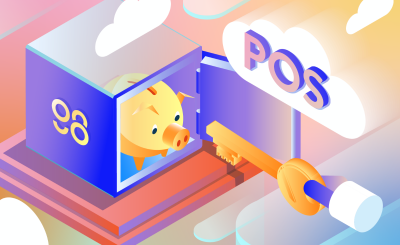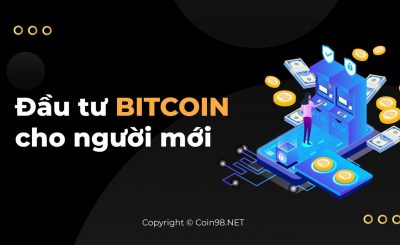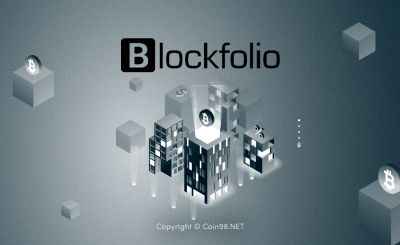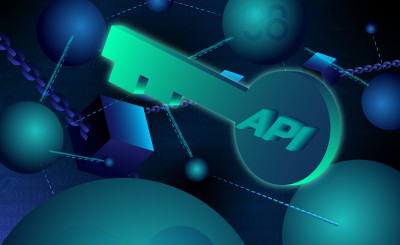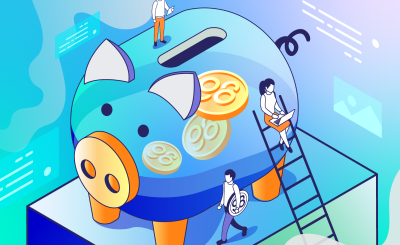Overview
DeFi is an acronym for Decentralized Finance (aka Open Finance).
According to Techtipsnreview, DeFi can be defined as follows:
An ecosystem of financial products and services built on a decentralized network (Blockchain).
To be classified as DeFi, that financial product or service must have the following attributes:
- Censorship Resistance: No third party can stop or reverse a transaction.
- Programmable Assets: Assets used in a product or service must have all the properties of a token on a decentralized network.
- Pseudonymity: Users will not need to KYC their identities or AML.
- Transparent and trustless: Transparency is reflected in the fact that anyone can verify transactions through the Blockchain. Trustless is demonstrated by the fact that users do not need to trust the reputation of a 3rd party to ensure that the transactions are valid.
- Permissionless: Anyone, anywhere, anytime can access and use DeFi products and services without being decentralized, or restricted by anyone.
Some common components in DeFi at the moment:
- Lending & Borrowing: MakerDAO, Compound, Dharma….
- DEXs & Protocols (decentralized exchanges and protocols): Kyber Network, 0x, Uniswap…
- Derivatives, Margin Trading & Prediction Markets: bZx, dY/dX, Set Protocol, Synthetix, Augur….
- Wallets/Aggregators: Metamask, Argent, Zerion, Instadapp, DefiZap…
You may be interested: What is DeFi? Overview and future of decentralized finance
Lending & Borrowing
Borrowing and lending is one of the most popular use cases in the Ethereum DeFi ecosystem at the moment.
Overview
Lending/Borrowing in DeFi is a new, fully automated way of borrowing and lending, without the need for a third party, or a written contract.
For that to happen, DeFi Lending platforms/protocols will use smart contracts to establish rules for:
Loan amount:
What is the maximum loan rate based on collateral?
Interest rate:
- What is the interest rate when borrowing/lending?
- What is the minimum loan term?
Collateral asset:
- What property is acceptable for collateral?
- When will the mortgage be liquidated?
DeFi Lending platforms/protocols will benefit:
- Borrowers (borrowers): The ability to short sell assets or simply borrow money.
- Lenders (lenders): Maximize profitability from holding assets (cryptoassets).
- Both: Opportunity to profit from interest rate differentials between platforms.
Collateral Ratio
At present, most DeFi Lending platforms/protocols will conduct lending activities based on overcollateralization. That is, you can only borrow an amount less than the property you mortgage.
And, the Collateral Ratio of lending platforms/protocols is quite high, averaging ~325%. That is, if you mortgage $1000, you can only borrow up to about $308.
Here are the mortgage rates of the 3 most popular lending platforms/protocols:
Interest Lending/Borrowing Rate
Loan/loan interest rates will depend on each platform/protocol, and different asset classes will have different interest rates.
To monitor and compare interest rates between lending platforms/protocols, you can use LoanScan.io tool.
DeFi Lending Growth
DeFi Lending had a strong development from 2018 to mid-2019 with the growth of total locked assets (TVL) reaching +30.002.5% (more than 300 times).
Currently, with total locked assets (TVL) reaching $443 million, DeFi Lending accounts for more than 66.7% of the value of the DeFi ecosystem on Ethereum.
Although, DeFi Lending is still occupying a high proportion in the entire ecosystem. However, the proportion of Lending is on a downward trend (~35%) from the beginning of 2019 until now.
That is shown in the chart below:
This shows that DeFi is moving into other areas besides Lending.
DEXs & Protocols
DEX is an acronym for Decentralized Exchange.
DEX can be defined as follows:
DEX is a platform/protocol that allows any two parties to trade crypto assets peer-to-peer without having to trust a third party.
Four characteristics of DEX classification:
- Types: Exchange or Swap.
- Settlement: Where will the transaction take place? On-chain or off-chain.
- Order Books: Where are buy and sell orders kept?
Directly on the blockchain (on-chain) or operated by a 3rd party (off-chain).
- Pooled Liquidity: How is the liquidity?
Included in smart contracts on the blockchain (on-chain)
Or, many third parties aggregate buy and sell orders to create liquidity (off-chain).
Benefits of DEX:
- Self-Custody: Users are always in control of their assets.
- Permissionless: Users can access and perform transactions anywhere, anytime.
- Trustless: The two parties performing the transaction do not need to trust each other’s reputation.
Total DEX Volume 2019
The trading volume of DEX in 2019 is at $2.3 billion, down 74% (almost 4 times) compared to 2017.
DEX trading volume in 2019, still dominated by the DEX Order Books group, accounts for 57.82%, led by IDEX.
Closely followed is the Pooled Liquidity (Kyber + Uniswap) group which accounts for 31.5% of the total trading volume.
And,
Trading volume is shifting from the DEX Order Books group to the Pooled Liquidity DEX pool.
This is clearly shown in the trading volume of the last 3 months, Uniswap + Kyber has accounted for more than 60% of the trading volume.
Margin Trading Protocols
DeFi Margin Trading is only in the early stage.
DeFi Margin Trading can be defined as:
a platform/protocol that allows users to buy/sell crypto assets that are larger than they already have, automatically, without trusting a 3rd party.
When it comes to DeFi Margin Trading, there must be:
- Crypto Assets: What kind of crypto assets will be supported for trading?
- Collateral Assets: What kind of crypto assets are used as collateral?
- Interest Rate (APR): What is the borrowing rate of each asset class?
- Leverage: What is the maximum leverage used?
- Expiration: Is there a specified expiration time?
- Max Slippage: How much % is slippage when executing buy/sell orders?
DeFi Margin Trading 2019
Although, only appeared at the end of 2018 – early 2019. However, the DeFi Margin Trading group has developed quite quickly, with the total value of locked assets (TLV) reaching ~ $ 24.7 million, an increase of + 12,240% after only 1 year.
In September 2019, the DeFi Margin Trading Team accounted for approximately 7.19% of DeFi’s total TLV.
However, at the present time, this rate is only 3.78%, down 47% in just 3 months.
This is talking about the unstable state of DeFi Margin platforms/protocols.
Derivatives & Assets
DeFi Derivatives can be:
a platform/protocol that allows users to create, buy, and sell crypto-related derivatives without going through a 3rd party.
Speaking of, DeFi Derivatives will have the points you need to know:
- Price Feed: The price will be tracked by the platform/protocol itself or provided by a trusted vendor.
- Collateral Assets: What assets will be used as collateral when creating derivative products.
- Collateral Ratio: What is the mortgage rate?
Example: Synthetix
- Price Feed: powered by ChainLink
- Collateral Assets: SNX token
- Collateral Ratio: >700%
DeFi Derivatives in 2019
DeFi Derivatives is a very fast growing segment in terms of locked assets (TVL), increasing by more than +9753.3% (~97.5x) in just 1 year.
Currently, DeFi Derivatives accounts for 26.68% of the entire DeFi ecosystem, just behind the DeFi Lending array.
However, DeFi Derivatives is being divided very strongly as Synthetix alone accounted for 97.89% of total TVL value.
Wallets/Aggregators
DeFi Wallets/Aggregators is a game about EQUITY, not about TOKEN anymore.
DeFi Wallets
To be classified as DeFi Wallets, the hosted wallet MUST be a non-custodial wallet.
Non-Custodial means:
Users take full control of their crypto assets through holding private keys.
Remember: Not your keys, not your coins.
Some popular non-custodial wallets: MyEtherWallet, Argent, Metamask…
DeFi Aggregators
Aggregators are understood as an aggregator of many different DeFi products, allowing users to select and use many products at the same time.
For example, DEX.AG is an aggregator of DEXs, allowing users to buy and sell tokens through various DEXs.
Most of the Aggregators have only appeared since 2019, with a few popular names such as:
Instadapp, DeFiZap, ParaSwap ,Zerion, DefiSaver, DEX.AG, 1inch.exchange…..etc
Investment opportunity in Aggregators?
For VCs: YES.
Although, aggregators still have no way to earn revenue/profit. However, VC investment funds still accept to pour investment capital into this type of investment. With two recent typical projects, InstaDapp ($2.4m) and Zerion ($2m).
For our brothers and sisters: HARD!
Source: DeFi Simplified: Understand DeFi in 3 Minutes
– TechtipsnReview

